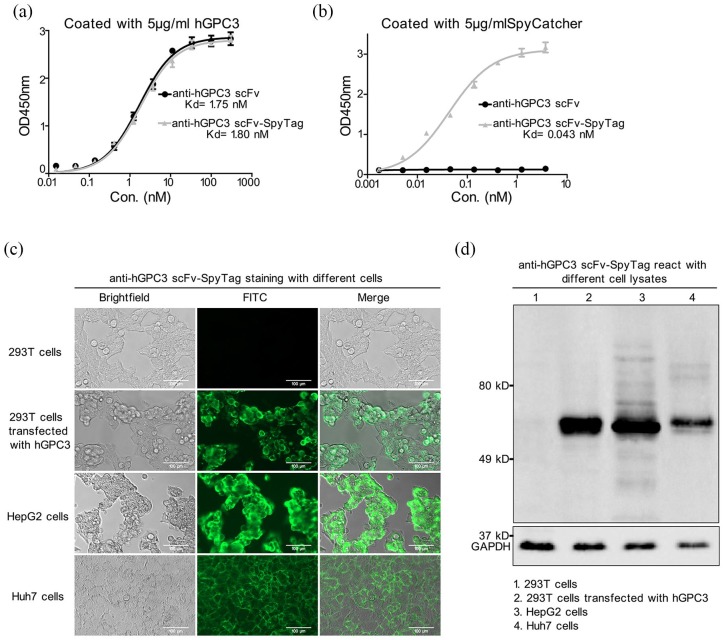Figure 2.
Anti-hGPC3 scFv-SpyTag specifically recognizes tumor-associated antigen hGPC3 in vitro. A 5-μg/ml aloquot of recombinant hGPC3 or SpyCatcher protein was coated onto 96-well ELISA plates, a series of diluted antihGPC3 scFv with or without a SpyTag was added, and HRP-labeled goat anti-mouse IgG F(ab’)2 fragment was used as the secondary antibody. All experiments were carried out in triplicate wells and repeated twice; the data were pooled and plotted as mean ± SD. (a) SpyTag hardly affects the binding of antihGPC3 scFv with hGPC3. (b) Anti-hGPC3 scFv cannot bind to SpyCatcher, whereas anti-hGPC3 scFv- SpyTag binds to SpyCatcher with high affinity. The Kd values were calculated by GraphPad Prism software. (c) Anti-hGPC3 scFv-SpyTag recognizes native hGPC3 expressed on HCC cell lines. Different cells were cultured in 96-well plates and incubated with 2 μg/ml anti-hGPC3 scFv-SpyTag and detected by FITC-labeled goat anti-mouse IgG F(ab’)2. Scale bar, 100 μm. (d) Total proteins were extracted from different cell lines, separated by 10% SDS-PAGE and transferred onto 0.45 μm PVDF membranes. The binding specificity of Anti-hGPC3 scFv-SpyTag was detected by Western blot.
FITC, fluorescein isothiocyanate; HCC, hepatocellular carcinoma; hGPC3, human glypican-3; HRP, horseradish peroxide; PVDF, polyvinylidene fluoride; SD, standard deviation.

